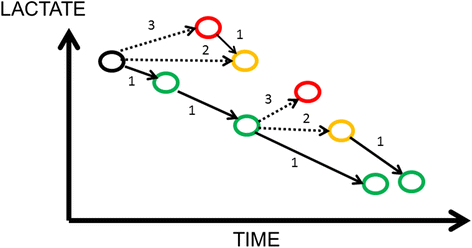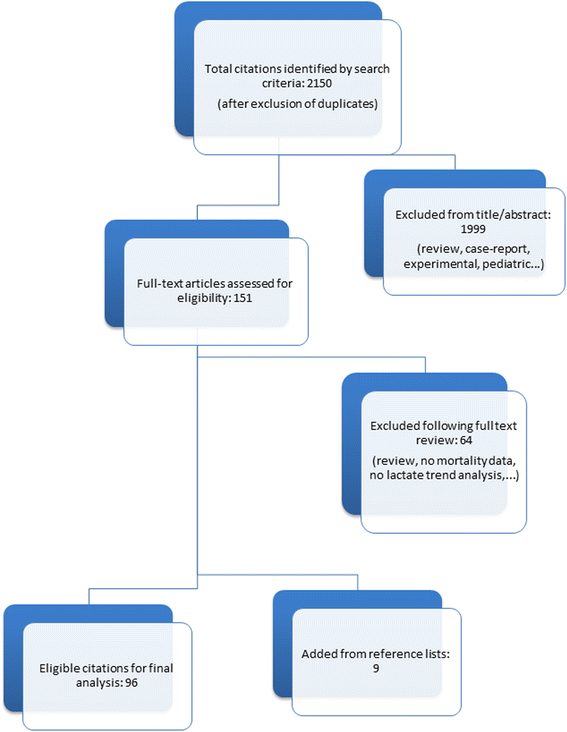The value of blood lactate kinetics in critically ill patients: a systematic review
- PMID: 27520452
- PMCID: PMC4983759
- DOI: 10.1186/s13054-016-1403-5
The value of blood lactate kinetics in critically ill patients: a systematic review
Abstract
Background: The time course of blood lactate levels could be helpful to assess a patient's response to therapy. Although the focus of published studies has been largely on septic patients, many other studies have reported serial blood lactate levels in different groups of acutely ill patients.
Methods: We performed a systematic search of PubMed, Science Direct, and Embase until the end of February 2016 plus reference lists of relevant publications. We selected all observational and interventional studies that evaluated the capacity of serial blood lactate concentrations to predict outcome. There was no restriction based on language. We excluded studies in pediatric populations, experimental studies, and studies that did not report changes in lactate values or all-cause mortality rates. We separated studies according to the type of patients included. We collected data on the number of patients, timing of lactate measurements, minimum lactate level needed for inclusion if present, and suggested time interval for predictive use.
Results: A total of 96 studies met our criteria: 14 in general ICU populations, five in general surgical ICU populations, five in patients post cardiac surgery, 14 in trauma patients, 39 in patients with sepsis, four in patients with cardiogenic shock, eight in patients after cardiac arrest, three in patients with respiratory failure, and four in other conditions. A decrease in lactate levels over time was consistently associated with lower mortality rates in all subgroups of patients. Most studies reported changes over 6, 12 or 24 hrs, fewer used shorter time intervals. Lactate kinetics did not appear very different in patients with sepsis and other types of patients. A few studies suggested that therapy could be guided by these measurements.
Conclusions: The observation of a better outcome associated with decreasing blood lactate concentrations was consistent throughout the clinical studies, and was not limited to septic patients. In all groups, the changes are relatively slow, so that lactate measurements every 1-2 hrs are probably sufficient in most acute conditions. The value of lactate kinetics appears to be valid regardless of the initial value.
Figures


References
Publication types
MeSH terms
Substances
LinkOut - more resources
Full Text Sources
Other Literature Sources
Medical
Miscellaneous

